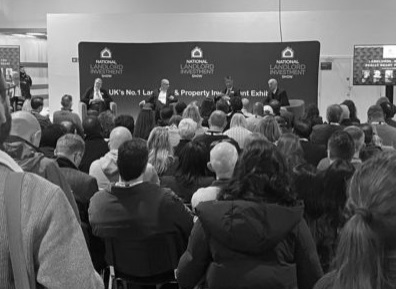The government’s proposal to introduce a new one per cent deposit mortgage scheme to help young people onto the property ladder is unworkable in practice and could saddle a generation with risky levels of debt says Charlie Davidson, a residential property expert with London law firm Bishop & Sewell.
A one per cent deposit mortgage would see prospective first-time-buyers contribute just one per cent of the value of the property as a deposit, meaning they need to repay 99 per cent of the property’s value through their mortgage payments.
While it’s typical for lenders to require a 10 per cent deposit, and some mortgages with five per cent deposits are also available, the proposed strategy aims to remove the need for high deposits, a significant barrier to home ownership for many young people.
However, Davidson says they could cause significant unintended consequences in the UK property market.
He says: “Removing barriers to home ownership is a laudable aim and young people do need support to get onto the housing ladder but in practice a one per cent deposit policy could have a dire impact.
“For one thing, it seems incredibly unwise to incentivise people to saddle themselves with such high levels of debt. It’s all very well taking on a 99 per cent loan-to-value mortgage if property prices always rise, but the reality is that many people could quickly face negative equity should property values drop, or simply to not rise in line with interest rates. Likewise, any interest rate hikes could see homeowners unable to keep up their mortgage repayments.
“Bad debt can have a contagious impact on an economy, as we saw with the subprime mortgage crisis in the US, which was fuelled by lending on risky mortgages, and contributed to the 2007/8 global financial crisis. Policy makers need to be conscious that banks don’t always lend responsibly.
“The policy could stimulate demand for properties as more people will be able to purchase a home, but does little to improve the supply side. In fact, with many housing developers reliant on contractual deposits as a source of funding to finish building-out developments, there is a risk that one per cent deposits will not provide sufficient capital to enable developers, especially the smaller players, to compete.
“Furthermore, from a practical legal perspective, the conveyancing process envisages a contractual deposit of 10 per cent of the purchase price, which the buyer is obliged to pay to the seller at the point of exchange of contracts. This should not be confused with the ‘deposit’ which is the money buyers provide up front towards the total purchase price of the property (i.e. not being borrowed).
“If the buyer then fails to ‘complete’ the contract after the completion date, the contractual deposit can be forfeited to the seller for breach of contract.
“This is a standard requirement in conveyancing contracts, and it means that even if an individual wants to enter into a one per cent deposit mortgage, they will still need to hand over 10 per cent of the purchase price to the conveyancing solicitor to enable the exchange, unless a lower deposit figure is agreed. This itself can be difficult, as a lower contractual deposit would need to be agreed across the whole conveyancing chain.
“Given that most young people will not be selling their own property, they will need to meet the deposit from their personal savings/resources, which puts them back to square one.
“The proposal has clearly been floated as a potential vote-winner and it will be interesting to see whether any of the political parties make a commitment to one per cent deposit mortgages in their forthcoming manifestos, ahead of the General Election later this year, but the implications and possible impact of such a policy need to be thoroughly considered.”
We're excited to announce that we're working on building a shiny new website for readers of Landlord Today! As part of this process, commenting on articles will be temporarily disabled. We look forward to sharing our new and improved Landlord Today website with you shortly!






/HousesofParliament-3-400x310.jpg)

.png)

(1).png)







.jpg)






%20(002).png)




